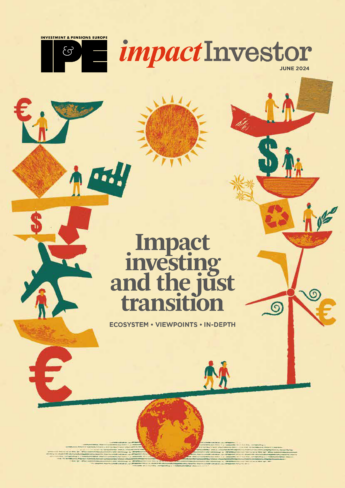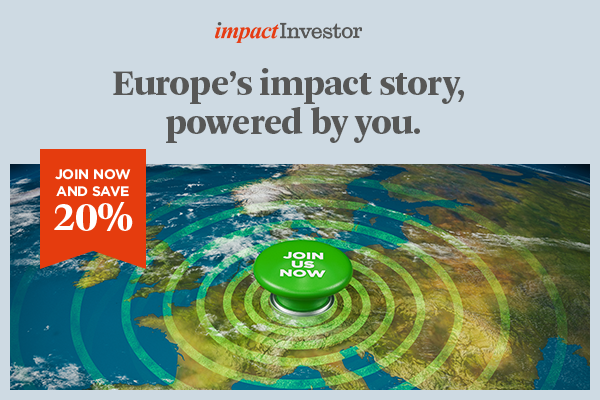From our ‘Impact Investing and the Just Transition’ report: There was a lull in private equity impact fund raising in 2023 following a banner 2022. But there are now signs that normality is returning to the market.

Impact investing has become a firm fixture in the private equity sphere, thanks to greater interest in sustainability as well as regulatory pressures, especially in Europe, to address societal problems. However, there are still challenges with data and measurement of success.
It was a slow burn, but private equity funds are now the biggest contributor of impact capital, with €158bn committed between 2015 and 2023, according to the latest research from Phenix Capital Group. The last nine years also saw the number of funds in Phenix Capital’s database soar to 1,258, a 191% increase over the period. The overall figure, of course, is still a drop in the bucket of the 24,000-plus private equity funds analysed by Pitchbook.
Private equity impact funds have not been immune to the broader headwinds rocking the overall industry. The universe of new funds in the Phenix Impact Database grew by 1.2% for 2023, adding only 15 new products, culminating in a total of 1,258. This compared to 87 new funds for the previous year, equivalent to a growth rate of 7%. However, Private equity impact funds fared much better than their traditional counterparts, where new fund launches hit a six-year low at 952, a significant decline from the 2,284 the prior year.
In its report from March this year, The State of Private Market ESG and Impact Investing in 2024, PitchBook points to a subdued 2023 in terms of private market impact fund raising. Just 107 funds closed last year, raising some $43.8bn (€42bn). This compares with 213 funds raising a touch under $150bn in 2022.
However, PitchBook points to an uptick in interest towards the end of last year and some 25 impact fund closings in January and February 2024, raising some $5.9bn in commitments. Around 30 funds were in the market at the time of the report targeting more than $1bn and several hundred funds with smaller fundraising targets.
“There is scope to believe that Impact fundraising can turn around in 2024,” the report states.
Other market participants also anticipate a much brighter fundraising environment this year, as fears over a recession have faded and encouraging signs of interest rate cuts are on the horizon in many developed countries.

“We expect strong growth this year due to increased demand from asset owners,” says Dirk Meuleman, CEO of Phenix Capital. “Many large asset management teams are hiring more people and raising money for their private equity impact strategies. Several of these funds weathered COVID-19 which has been helpful, and we have also seen impact investing moving more mainstream.”
Entrenched strategy
Yali Karadogan, head of investor solutions, LeapFrog Investments, a specialist impact fund manager, echoes these sentiments. He notes that although impact investing is often referred to as a trend, it is not a fleeting fashion statement but has become an entrenched strategy, thanks to mounting interest from investors who seek to make a meaningful difference. Most private equity impact funds adhere to the goals encapsulated in the Global Impact Investing Network (GIIN) framework, which describes impact investments in general as those made with the intention to generate positive, measurable social and environmental impact alongside a financial return.
Market participants believe that the asset class is particularly well suited to deliver the impact goods. This is not only because managers are experienced in making enhancements, but also because private equity’s long-term investment horizon of between four to six years gives them time and space.
“With their influence as shareholders, private equity investors can enhance management and ensure sound governance practices,” says Martin Diaz Plata, head of private equity Investments at BlueOrchard, an impact investment specialist, part of the Schroders Group.
“They can steer the strategic agenda of their portfolio companies towards climate objectives, inclusiveness and affordability of their services. Their expertise and network can help develop new capabilities and products and enhance the effectiveness and efficiency of operations,” adds Diaz Plata.
Size does not matter
To date, behemoth players such as TPG, Apollo, KKR and Blackstone have grabbed the headlines with their dedicated impact funds, but their smaller peers are making their mark.
As Meuleman points out, over 60% of the funds in Phenix’s list fall under the venture capital banner, with less than 10% dedicated to buyout strategies, while the remainder are focused on growth investing. This is not surprising, given that impact investing is driven by the need for startup or early-stage financing for promising business models that address societal or environmental problems.

Size, however, is not the differentiator for investors choosing an impact private equity manager. “A track record is very important,” says Maurice Klaver, head of the sustainable development investments (SDI) team within PGGM’s private equity group. “It is easier to look at a manager that has been around and has experience in this area.”
Angelika Delen, global head of impact investing & Europe (ex UK) strategic research director at Mercer, agrees, noting there are many private equity managers who have integrated ESG criteria into their funds, and some have moved on to impact investing. “They see more opportunities because they understand how to address the ESG challenges. They know how to support a company and have experience in extracting sustainable value as well as generating a financial return,” Delen adds.
Health, innovation and zero hunger
While there is no dearth of prospects, the Phenix survey found that three of the 17 UN Sustainable Development Goals (SDGs) dominate. the impact field. Good health and wellbeing topped the preference list, mainly because healthcare is not only recession-proof, especially in the developed world, but it also ticks the box of innovation and technology.
Industry, innovation and infrastructure across the board came in second, with funds targeting advanced technologies, lower carbon emissions and increased mobile broadband access. This was followed by zero hunger, which encompasses solutions across the food and agriculture business value chain, including FoodTec, as well as sustainable agriculture and farming.
Other studies show biodiversity rising in the ranks, as impact-focused private equity managers look to fulfil the SDG goal of promoting sustainable use of terrestrial ecosystems and reversing land degradation. Finding solutions is part of the equation, but so is working with sectors such as food, infrastructure and mobility, energy, and fashion that are responsible for the great majority of global biodiversity loss.
“Many use the UN SDGs because they are broadly seen as acceptable guidelines for alignment,” says Delen. “The more advanced managers will also report on the Operating Principles for Impact Management (OPIM)”. The framework was launched in April 2019, to ensure that impact considerations are purposefully integrated throughout the investment life cycle.
Greg Jania, global co-head of private equity at APG Asset Management, believes SDGs together with the European Union’s Sustainable Finance Disclosure Regulation (SFDR) are a good starting point for impact reporting. He notes that this is particularly true of Article 9, which is stricter and includes social and environmental objectives. The framework’s principal adverse indicators (PAIs) also provide a more structured framework for reporting.
However, Jania points out that a much more comprehensive approach is needed to assess the impact throughout the holding period and upon exit.
“You need to set up frameworks and methodologies ahead of time to measure the impact,” he says. “Most GPs work with consultants and in-house experts to build them. We also work with a responsible investor network to monitor progress and what needs to be improved. Engagement with clients is also important to make sure interests are aligned.”
Looking for the exit
Exits can be challenging although this is changing, according to Klaver. He says: “We are seeing a number of incentive schemes where a partner’s profit sharing depends on the success of the impact that is made in the fund.”
“The industry is also trying to come up with initiatives such as the private markets ESG Data Convergence Initiative (EDCI) which is broader than the principal adverse impacts (PAI) and looks to create KPIs that can be applied to all investments as well as generate comparable, performance-based data,” Klaver adds.
While metrics are important, choosing the right exit strategy should not be underestimated.
As Karadagon puts it, “impact-focused private equity managers do not view impact as a toggle that can be switched on and off based on who owns the company. The profit with purpose mantra only really works if the purpose aspect is fully integrated within profit, and this purpose is in fact the core mission of the business. Prospective buyers will only move ahead with an acquisition if they fully believe the business will continue to profitably grow.”
He notes that LeapFrog and other impact investing firms also typically have impact objectives cemented into their exit processes, including vetting prospective buyers to ensure they meet certain criteria for responsible ownership and ethical stewardship of the business moving forward.

This article is part of the ‘Impact Investing and the Just Transition’ report, a collaboration between Impact Investor and our sister publications IPE and IPE Real Assets.
You can download a digital copy of the report here.






